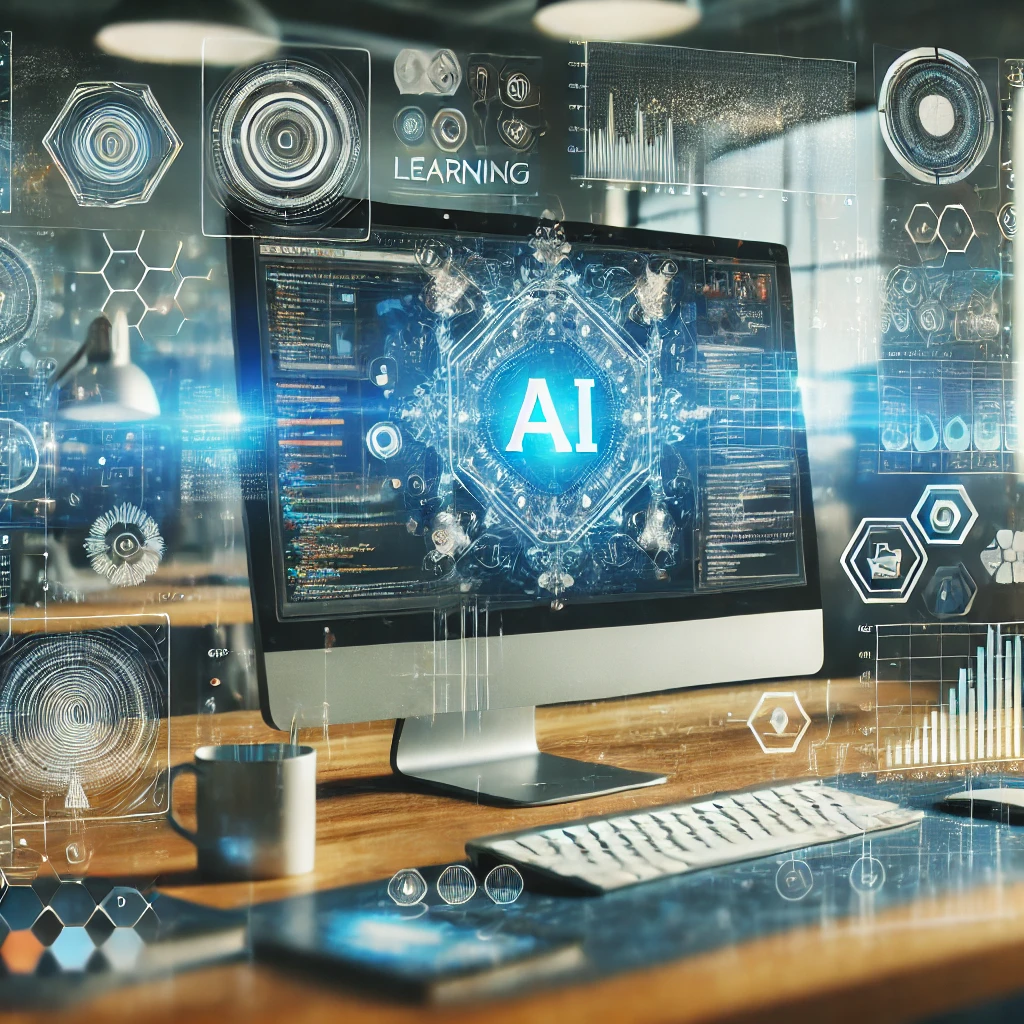
Artificial Intelligence (AI) has swiftly transformed from a futuristic concept to a key part of our everyday lives. Whether it’s enhancing customer experiences, automating repetitive tasks, or enabling smarter decision-making, AI is redefining industries worldwide. As you embark on an AI development journey, the choice of software tools can make or break your project. In this article, we’ll explore the top artificial intelligence software development tools, helping you make informed decisions that suit your project needs.
Table of Contents
What Are AI Software Development Tools?
AI software development tools are the foundation for building, training, and deploying machine learning (ML) models and AI solutions. These tools provide pre-built frameworks, libraries, and APIs that help you develop intelligent systems more efficiently. The key to success lies in choosing the right tool based on your project’s requirements, whether you’re developing a basic chatbot or an advanced self-driving car.
Key Features of AI Software Development Tools
AI tools are designed to simplify the process of developing machine learning models. The key features of AI software development tools include:
- Flexibility: Most AI tools allow you to create, test, and modify machine learning models, adapting to different use cases and industries.
- Scalability: The ability to handle large datasets and complex algorithms is essential, especially for projects that require scaling over time.
- User-Friendly Interfaces: Many AI tools offer intuitive interfaces, enabling developers of all skill levels to build and deploy models easily.
- Pre-Built Models: Access to pre-trained models can drastically reduce the time needed to develop AI solutions.
AI development tools play a pivotal role in streamlining the creation of intelligent applications, saving you valuable time and resources.
The Rise of AI in Software Development
AI tools have grown in importance due to the increasing demand for automation, enhanced decision-making, and smarter technologies across industries. In fact, AI is now at the core of many innovations, from healthcare and finance to e-commerce and logistics.
Industry Demand for AI Tools
The global AI market is on a steep rise, with the demand for AI solutions expected to grow exponentially. According to recent reports, the AI industry is projected to reach a market value of over $190 billion by 2025. This surge is fueled by industries across the board seeking AI tools to enhance their capabilities, optimize operations, and improve customer satisfaction.
Benefits of AI in Development
Incorporating AI tools into your software development workflow provides several advantages:
- Faster Development Cycles: AI-powered tools automate tedious tasks, accelerating development and reducing human error.
- Improved Accuracy: AI models can analyze data at speeds and accuracies far beyond human capability, providing insights that guide better decision-making.
- Cost Efficiency: By automating repetitive tasks, AI tools help save time and reduce the cost of human labor.
With these advantages, it’s clear why AI is seen as a game-changer in software development.
Top Artificial Intelligence Software Development Tools

Now that you have a basic understanding of what AI development tools are, let’s dive into some of the best AI tools available today. Whether you’re working on machine learning, deep learning, or natural language processing, these tools can help you achieve your goals with ease.
TensorFlow
Overview of TensorFlow
Developed by Google, TensorFlow is an open-source framework that has quickly become the go-to tool for AI developers worldwide. It’s especially popular for building deep learning models and large-scale machine learning applications.
Key Features
- Scalability: TensorFlow allows you to build and train large models on a variety of platforms, including desktops, mobile devices, and cloud systems.
- Comprehensive Libraries: It provides numerous libraries and tools, including TensorFlow Lite for mobile development and TensorFlow.js for building models in JavaScript.
- Versatility: TensorFlow supports both supervised and unsupervised learning, making it adaptable to various AI applications.
Best For
TensorFlow is ideal for developers focused on deep learning and neural networks, especially those working with large datasets and complex models.
Pros and Cons
- Pros: TensorFlow is open-source, highly customizable, and has a large community for support.
- Cons: It can be challenging for beginners due to its steep learning curve and complex syntax.
PyTorch
Overview of PyTorch
Created by Facebook’s AI Research lab, PyTorch is a deep learning framework that has gained massive traction for its simplicity and flexibility.
Key Features
- Dynamic Computational Graphs: Unlike TensorFlow, which uses static graphs, PyTorch allows you to modify your model on the go with dynamic graphs, making it easier to debug.
- Strong Python Integration: PyTorch is designed to integrate seamlessly with Python, making it more accessible for developers who are already familiar with the language.
- Research Focus: PyTorch is widely used in research and academia, thanks to its flexibility and ease of use.
Best For
PyTorch is an excellent choice for researchers and developers who need rapid prototyping and flexible model-building capabilities.
Pros and Cons
- Pros: PyTorch’s dynamic graph model makes debugging and iterative development easier, and it has a rich ecosystem of tools.
- Cons: While it’s growing rapidly, PyTorch’s ecosystem is still smaller than TensorFlow’s.
Keras
Overview of Keras
Keras is a high-level neural networks API written in Python. It runs on top of TensorFlow, making it more user-friendly while still harnessing the power of TensorFlow’s backend.
Key Features
- Simplicity: Keras offers a simple and intuitive API that makes it easier to build and experiment with deep learning models.
- Modularity: It’s built with modularity in mind, allowing you to stack layers and use pre-built components.
- Quick Prototyping: Keras’s focus on simplicity makes it ideal for fast model development.
Best For
If you’re just starting with AI development or need to prototype models quickly, Keras is a great option.
Pros and Cons
- Pros: Easy to use, ideal for rapid prototyping.
- Cons: Limited flexibility for building complex models compared to TensorFlow.
IBM Watson
Overview of IBM Watson
IBM Watson is a suite of AI tools designed to help businesses integrate AI into their operations. With capabilities like natural language processing (NLP), visual recognition, and AI-powered chatbots, Watson is a great choice for enterprises.
Key Features
- NLP and Chatbots: IBM Watson excels in language processing and can be used to develop intelligent chatbots and virtual assistants.
- AI-Powered Analytics: Watson’s powerful analytics tools help businesses extract insights from large datasets.
- Cloud Integration: Being part of the IBM Cloud ecosystem, Watson integrates seamlessly with other cloud services.
Best For
IBM Watson is tailored for enterprise-level applications, especially in fields like healthcare, finance, and customer service.
Pros and Cons
- Pros: Industry-specific AI solutions, robust analytics tools.
- Cons: Pricing can be high, making it less accessible for smaller businesses.
Microsoft Azure AI
Overview of Microsoft Azure AI
Microsoft Azure AI offers a range of cloud-based AI tools and services for developers looking to build AI-powered applications in the cloud.
Key Features
- Cognitive Services: Azure provides a set of pre-built APIs for vision, speech, language, and decision-making.
- Machine Learning: Azure AI includes tools for building custom machine learning models using its drag-and-drop interface.
- Scalability: As part of the Azure ecosystem, this tool offers unmatched scalability for enterprise-level applications.
Best For
Azure AI is perfect for large-scale projects that need integration with other cloud-based Microsoft services.
Pros and Cons
- Pros: Comprehensive tools, excellent scalability.
- Cons: Requires familiarity with Azure infrastructure and cloud services.
Google AI
Overview of Google AI
Google AI is a powerful suite of AI tools offered by Google, known for its pre-trained models and cloud-based services.
Key Features
- Pre-Trained Models: Google AI offers a range of pre-trained models for tasks such as image recognition and language translation.
- Cloud Integration: Google Cloud services make it easy to deploy AI models in the cloud, ensuring flexibility and scalability.
- TensorFlow Integration: Google AI integrates seamlessly with TensorFlow, allowing for deep learning model development.
Best For
Google AI is best suited for machine learning tasks, such as image recognition, NLP, and more.
Pros and Cons
- Pros: Powerful pre-trained models, easy integration with Google Cloud.
- Cons: Not ideal for highly specialized AI models.
How to Choose the Best AI Software Development Tool for Your Project

Selecting the right AI software development tool for your project depends on several key factors. Here’s a breakdown of what to consider before making your decision.
Key Considerations Before Choosing a Tool
- Project Requirements
Evaluate the complexity of your AI project. For simple models, you might want to go with a lightweight tool like Keras, while larger, more complex projects may benefit from TensorFlow or Microsoft Azure. - Scalability and Integration
Consider how the AI tool integrates with your existing tech stack. Some tools, like Azure AI, are ideal for large-scale commercial projects, while others like Keras are more suitable for smaller-scale applications. - Budget and Resources
Some AI tools, such as TensorFlow and Keras, are open-source and free to use. Others, like IBM Watson, come with a premium price tag. Make sure to assess your project budget before committing. - Support and Documentation
Opt for tools that have a strong support community and thorough documentation. Platforms like TensorFlow and PyTorch have large communities that can offer advice and troubleshoot common issues.
Conclusion
Artificial Intelligence is a rapidly evolving field, and the right software tools can make a huge difference in the success of your project. Whether you’re a beginner looking for user-friendly options like Keras or an experienced developer diving into deep learning with TensorFlow, there’s a tool that’s perfect for your needs.
As you venture into AI development, remember to assess your project’s scope, scalability, and budget. With the right tools, you can unlock the full potential of AI and take your software development to the next level.
Call to Action:
Ready to kickstart your AI development project? Start experimenting with the tools mentioned above and let us know which ones you find most effective for your needs. Don’t hesitate to leave a comment or reach out for personalized guidance!
